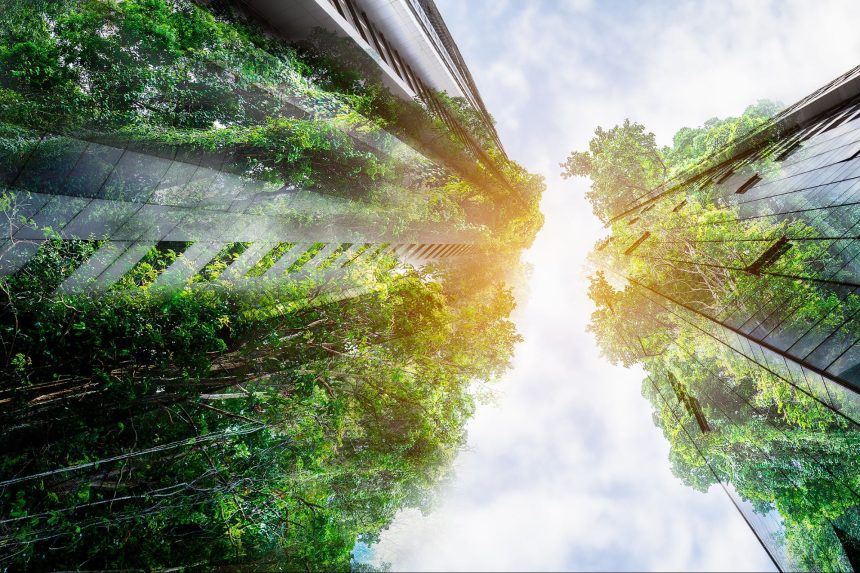As concerns over climate change and environmental sustainability grow, green buildings represent a significant shift in the real estate development landscape. Defined as structures designed and managed to reduce their environmental impact, green buildings have become a focal point for businesses committed to environmental sustainability.
For entrepreneurs and business leaders, there’s an increasing responsibility — and indeed an opportunity — to transition their existing buildings or offices into greener spaces. Rooted in ecological stewardship, these architectural marvels are designed to minimize environmental impact through resource conservation and sustainability.
Related: You Can Embrace Green Building Without Breaking the Bank
Energy efficiency: The first step toward green buildings
While green buildings represent a significant evolution in real estate, their implications go beyond the initial construction phase. Entrepreneurs and business leaders have a significant role to play in this green revolution. By transforming their offices into eco-friendly spaces, they can contribute to environmental preservation while fostering a healthier work environment and reducing operating costs.
Transforming an office into a green building involves several interconnected steps. The first is energy efficiency, a cornerstone of the green building philosophy. Efficient energy use not only reduces carbon emissions but also lessens reliance on non-renewable power sources. Energy efficiency is the backbone of any green building. By optimizing energy use, businesses can significantly reduce their carbon footprint. Replacing conventional lighting with energy-efficient LED or compact fluorescent lights (CFLs) can reduce energy consumption by up to 75%. Furthermore, intelligent lighting systems, such as those with occupancy sensors or natural light adjustments, can further minimize energy wastage.
High-performance appliances, rated by programs like ENERGY STAR, can offer significant energy savings over their conventional counterparts. Building automation systems, managing HVAC, lighting and other power systems, ensure energy is used only when needed, leading to substantial energy conservation. Green buildings, through energy-efficient design and sustainable practices, can lead to significant cost savings in the long run.
Harnessing renewable energy
To take the leap from energy efficiency to green energy, businesses can transition to renewable energy sources. Green buildings ideally source their power from renewable resources, thus reducing reliance on fossil fuels and minimizing carbon emissions. Installing solar panels, for instance, can help offset a significant portion of a building’s energy consumption.
If on-site generation is unfeasible, business leaders can explore renewable energy contracts. Numerous energy providers offer “green power” plans where the electricity is sourced from renewable energy projects. If installing renewable energy systems is not feasible, consider green energy contracts. Many energy providers offer plans where the electricity is sourced from renewable sources.
Related: Want to Be More Sustainable? 4 Ways To Take Advantage of the Inflation Reduction Act
Water conservation and management
Water is another critical resource that can be managed more effectively. Small changes, like installing low-flow taps, toilets and urinals, can significantly reduce water consumption in the office. Going a step further, consider implementing a rainwater harvesting system. Rainwater can be collected, stored and used for non-drinking purposes, such as watering plants or flushing toilets. Low-flow fixtures, such as taps, toilets and urinals, can reduce water consumption by up to 20%.
Aside from installing low-flow fixtures and rainwater harvesting systems, businesses can explore other methods of conserving water. Greywater recycling systems, for instance, can treat and reuse water from sinks, showers and washing machines for non-potable uses like flushing toilets and irrigation. Businesses can also implement water-efficient landscaping, using native or drought-resistant plants, which require less water and maintenance. Ensuring regular maintenance to prevent leaks, which can lead to significant water wastage over time, is another practical step toward water conservation.
Waste management
Waste management is an essential component of a green office. Establishing recycling programs can ensure that waste materials such as paper, plastic, metal and electronics are properly disposed of and repurposed. If the office has a kitchen, consider composting food waste. Not only does this reduce the amount of waste going to landfills, but the resulting compost can be used to nourish office plants or donated to local community gardens. By establishing recycling programs, businesses can ensure that waste materials like paper, plastic and metal are properly disposed of and repurposed. Composting organic waste reduces the amount of waste going to landfills while producing nutrient-rich soil for use in landscaping.
Beyond recycling and composting, businesses can implement waste reduction strategies. This could involve going paperless, using digital alternatives for meetings and note-taking, and reducing unnecessary packaging in the office. Moreover, businesses can explore the concept of a circular economy, where resources are used for as long as possible, and at the end of their life, components are recovered and regenerated. This could involve initiatives like leasing office equipment or using modular furniture that can be easily repaired, upgraded or disassembled for recycling.
Related: Meet BlocPower, the Startup That Dreams of Green Buildings Throughout the United States
Enhancing indoor environmental quality
Good ventilation not only ensures an adequate supply of fresh air but also helps control indoor humidity levels, reducing the risk of mold growth. Businesses can also consider “thermal comfort,” which refers to maintaining a temperature range in which people feel comfortable. Thermal comfort depends on factors like air temperature, humidity, air movement and the type of clothing worn by people. The indoor environmental quality significantly affects occupant health and productivity. Using low-VOC (volatile organic compounds) or VOC-free paints, adhesives and cleaning products reduces exposure to harmful chemicals. Additionally, incorporating indoor plants can improve air quality while creating a more calming and attractive environment.
Embarking on the journey to transform an office into a green building requires commitment and often investment. Still, the benefits — from cost savings and improved employee health to promoting a more sustainable future — make it a worthwhile endeavor. By taking these steps, entrepreneurs and business leaders are not just creating healthier, more sustainable workplaces. They are joining the green building revolution, contributing significantly to the future of sustainable real estate development and shaping the way we think about the spaces in which we work.
The evolution of the green building movement offers an array of opportunities for entrepreneurs and business leaders. By staying abreast of the latest green practices and technologies and fostering a culture of sustainability within their organizations, they can make a meaningful contribution to the environment while reaping tangible business benefits. It’s a win-win scenario, where businesses can bolster their bottom line while making strides towards a more sustainable and ecologically responsible world.
Read the full article here










